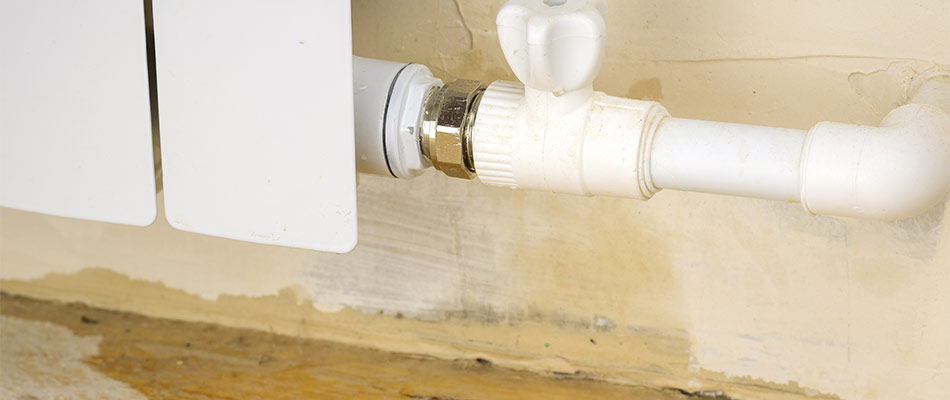Guide To Water Leakage Discovery In Your Home
Guide To Water Leakage Discovery In Your Home
Blog Article
How do you really feel when it comes to Finding hidden leaks?

Early discovery of leaking water lines can reduce a potential disaster. Some little water leakages might not be visible.
1. Check Out the Water Meter
Inspecting it is a proven method that aids you find leaks. If it relocates, that indicates a fast-moving leakage. This means you may have a slow-moving leak that might also be below ground.
2. Check Water Usage
Assess your water bills as well as track your water consumption. As the one paying it, you must see if there are any inconsistencies. If you identify sudden changes, regardless of your consumption coinciding, it implies that you have leakages in your plumbing system. Keep in mind, your water bill need to fall under the same array each month. A sudden spike in your costs indicates a fast-moving leakage.
At the same time, a stable boost on a monthly basis, even with the exact same routines, reveals you have a slow-moving leak that's also slowly intensifying. Call a plumber to thoroughly check your building, specifically if you really feel a cozy location on your floor with piping underneath.
3. Do a Food Coloring Test
When it concerns water consumption, 30% originates from commodes. Examination to see if they are running effectively. Decrease specks of food shade in the storage tank and wait 10 mins. There's a leakage between the container and dish if the shade somehow infiltrates your bowl throughout that time without flushing.
4. Asses Outside Lines
Don't forget to examine your outdoor water lines also. Must water leak out of the connection, you have a loosened rubber gasket. One small leakage can lose lots of water and surge your water bill.
5. Examine the situation and check
Home owners must make it a habit to inspect under the sink counters and also even inside cupboards for any kind of bad odor or mold and mildew growth. These two warnings suggest a leakage so prompt attention is needed. Doing routine examinations, also bi-annually, can save you from a major problem.
Inspect for stainings and deteriorating as the majority of devices as well as pipelines have a life expectations. If you suspect leaking water lines in your plumbing system, don't wait for it to intensify.
Early discovery of dripping water lines can alleviate a possible calamity. Some little water leakages might not be noticeable. Examining it is a proven means that helps you discover leaks. One tiny leakage can throw away bunches of water and also increase your water expense.
If you think leaking water lines in your plumbing system, do not wait for it to rise.
How to Know If Your Home Has a Hidden Leak
Water Meter Reveals Inexplicable Water Usage
If you’d like to test whether or not there’s a leak somewhere in your home, you can do this using your water meter. Here is how to conduct the test:
Don’t use any water in your home for at least 30 minutes; this also means not turning on faucets or water-using appliances.
Go outside, and check your water meter for activity.
If your water meter shows that there was activity, even though no one was using any water, this proves that there is a leak in your home.Visible Mold or Mildew Growth
Leaks behind walls create moist, dark environments that allow mold and mildew to grow and thrive. Eventually, you might see mold growth forming on the wall closest to a hidden leak.
If mold is growing in an area that receives a high amount of moisture, such as a bathroom, it may simply be an indication that better ventilation is needed. However, if you see mold growth on a wall or the ceiling in an area where you would not expect, you probably have a hidden leak.
Musty, Mildew Odor
Sometimes you might not be able to see the mold or mildew that is growing as a result of a leak. However, the smell can give the problem away just as easily. If you catch a whiff of something musty, there’s a good chance that old water is collecting somewhere in your home that you can’t see.
Stained/Warped Walls, Ceilings, or Floors
When your home soaks up water, a variety of red flags can become visible, including ceiling stains, bubbling drywall, warped walls, and sagging floors. While these issues can be caused by excess humidity, they can also be signs that a pipe or plumbing connection has started leaking behind your walls.
Inexplicably High Water Bill
After a while, you get a general sense for what your water bill should be. If you own a pool or sprinkler system, your bill will tend to be higher during summer. However, if you receive a water bill that seems especially high, and you can’t figure out what caused it, then you may have a hidden leak somewhere that’s increasing your bill.
https://www.plumbingjoint.com/blog/2019/july/how-to-know-if-your-home-has-a-hidden-leak/

We hope you liked our topic on Detecting hidden plumbing leaks. Thank you so much for taking time to browse our post. Do you know about anybody else who is serious about the subject? Be sure share it. Thanks for taking the time to read it.
Report this page